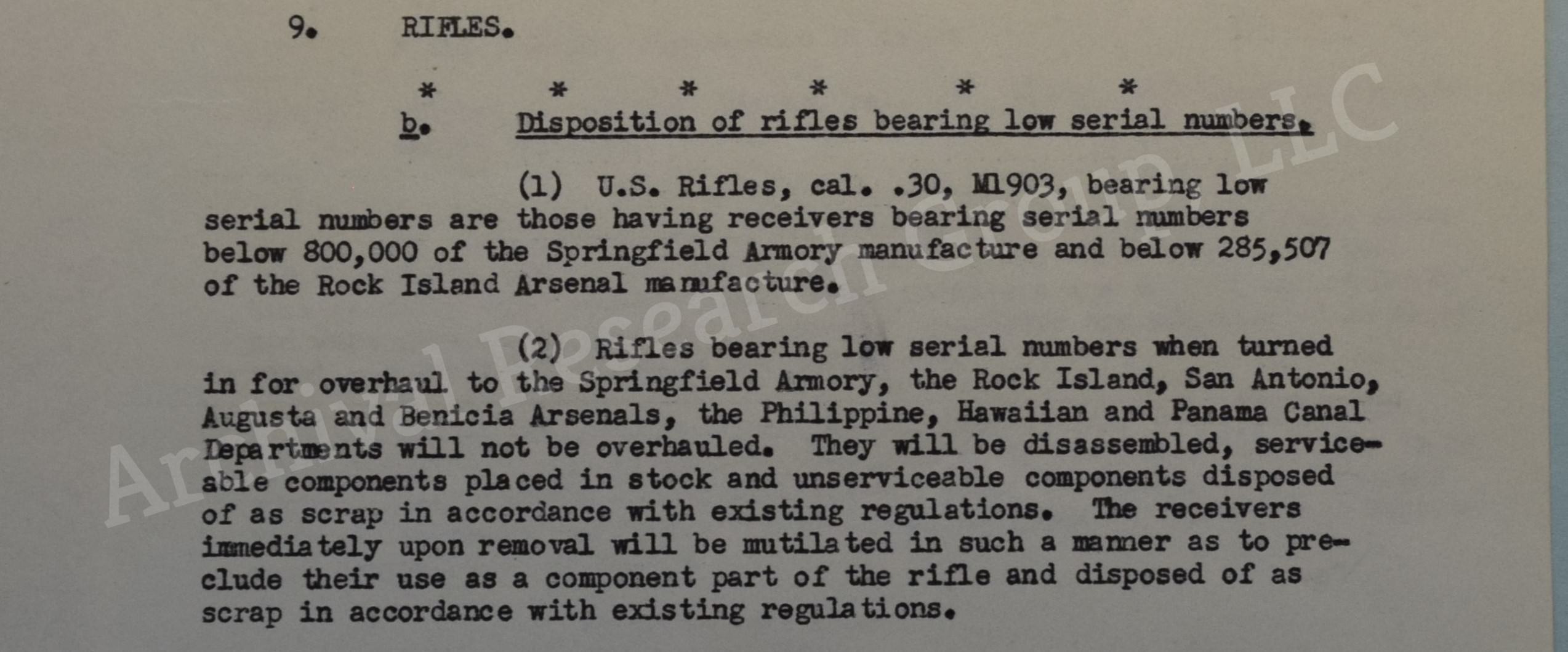SmokeEaterPilot
Active Member
- Jun 3, 2011
- 525
Processing files for my online library for next month and these jumped out at me.
The issue of the low number debate from the Admin Office of the Chief of Ordnance.
Shows how "dramatic" the Office of Chief of Ordnance can be.
The first imagine is from a 1931 report. "We need to prevent these rifles from being dangerous to anyone ever again. Not only we are taking them out of service, we're mutilating them in such a fashion where they can never harm anyone ever again."
The second is from a report in 1944 on steel lots: "well as long as they're properly head spaced, they're safe with standard ammunition."
Interesting to read through the files and how drastically their attitude changes.
Please take into account some pretty significant variables....
1931 - Depression Era, Congressional funding for the Office of Chief of Ordnance (which Springfield and Rock Island fell under).
1944 - Massive World War raging in Europe and the Pacific.
Just fun reading these old documents, and the National Archives always have a lot to read!
Enjoy your week!


The issue of the low number debate from the Admin Office of the Chief of Ordnance.
Shows how "dramatic" the Office of Chief of Ordnance can be.
The first imagine is from a 1931 report. "We need to prevent these rifles from being dangerous to anyone ever again. Not only we are taking them out of service, we're mutilating them in such a fashion where they can never harm anyone ever again."
The second is from a report in 1944 on steel lots: "well as long as they're properly head spaced, they're safe with standard ammunition."
Interesting to read through the files and how drastically their attitude changes.
Please take into account some pretty significant variables....
1931 - Depression Era, Congressional funding for the Office of Chief of Ordnance (which Springfield and Rock Island fell under).
1944 - Massive World War raging in Europe and the Pacific.
Just fun reading these old documents, and the National Archives always have a lot to read!
Enjoy your week!



